Module 2: Molds, Yeasts and Protists
1/77
Earn XP
Description and Tags
Food Microbiology
Name | Mastery | Learn | Test | Matching | Spaced |
|---|
No study sessions yet.
78 Terms
Molds
What are ___________?
Filamentous fungi:
Molds consist of thread-like structures called hyphae that form a network known as the mycelium.
Cottony or fuzzy appearance:
Molds often appear as soft, fluffy growths on food surfaces.
Aerobic:
Molds require oxygen for growth, which is why they often grow on the surface of foods.
Importance of Molds in Foods
____________________:
Molds have both positive and negative impacts on foods:
Agents of Spoilage:
Molds spoil foods by decomposing organic matter.
Examples include spoilage of bread, fruits, and dairy products by molds such as Aspergillus and Penicillium.
Production of Toxins:
Some molds produce mycotoxins, which are toxic to humans and animals.
Examples:
Aspergillus flavus produces aflatoxins (toxic and carcinogenic).
Fusarium species produce fumonisins.
Source of Enzymes:
Molds are used to produce enzymes like amylases and proteases for industrial applications.
Source of Antibiotics:
Molds such as Penicillium are used to produce antibiotics like penicillin.
Production of Food Ingredients and Specific Foods:
Molds are involved in the production of:
Fermented foods like soy sauce and sake (Aspergillus oryzae).
Cheeses like blue cheese and Roquefort (Penicillium roqueforti).
Used as Animal Feeds:
Moldy by-products, such as those from fermentation processes, are sometimes repurposed as animal feed (though they must be free of mycotoxins).
mycotoxins
Production of Toxins:
Some molds produce _____________, which are toxic to humans and animals.
Examples:
Aspergillus flavus produces aflatoxins (toxic and carcinogenic).
Fusarium species produce fumonisins.
aflatoxins | fumonisins
Production of Toxins:
Some molds produce mycotoxins, which are toxic to humans and animals.
Examples:
Aspergillus flavus produces __________ (toxic and carcinogenic).
Fusarium species produce ____________.
amylases | proteases
Source of Enzymes:
Molds are used to produce enzymes like _________ and ________ for industrial applications.
penicillin
Source of Antibiotics:
Molds such as Penicillium are used to produce antibiotics like ___________.
Howard Mold Count Chamber
Enumeration and Isolation of Molds
Methods used to detect and quantify molds in food:
Surface Plating:
Molds are cultured on growth media such as Potato Dextrose Agar (PDA) to promote their growth.
Colonies are counted to estimate mold population.
Direct Microscopic Count:
A _ _________ _ _ ___ is used to directly observe and count mold spores or fragments under a microscope.
Commonly applied for quality control in food processing.
Potato Dextrose Agar (PDA)
Enumeration and Isolation of Molds
Methods used to detect and quantify molds in food:
Surface Plating:
Molds are cultured on growth media such as ____________ to promote their growth.
Colonies are counted to estimate mold population.
Direct Microscopic Count:
A Howard Mold Count Chamber is used to directly observe and count mold spores or fragments under a microscope.
Commonly applied for quality control in food processing.
Morphological Characteristics
Classification and Identification of Molds
Molds are classified and identified based on various characteristics:
__________________:
Observation of structural features, such as:
Shape and arrangement of spores.
Hyphae type (septate or non-septate).
Color, texture, and growth pattern.
Reproduction:
Molds reproduce by spores:
Asexual reproduction: Via conidia or sporangia (e.g., Penicillium).
Sexual reproduction: Via zygospores or ascospores (e.g., Rhizopus).
Molecular Techniques:
Modern techniques like PCR (Polymerase Chain Reaction) and DNA sequencing are used to identify molds at the genetic level, ensuring higher accuracy.
Reproduction
Classification and Identification of Molds
Molds are classified and identified based on various characteristics:
Morphological Characteristics:
Observation of structural features, such as:
Shape and arrangement of spores.
Hyphae type (septate or non-septate).
Color, texture, and growth pattern.
_____________:
Molds reproduce by spores:
Asexual reproduction: Via conidia or sporangia (e.g., Penicillium).
Sexual reproduction: Via zygospores or ascospores (e.g., Rhizopus).
Molecular Techniques:
Modern techniques like PCR (Polymerase Chain Reaction) and DNA sequencing are used to identify molds at the genetic level, ensuring higher accuracy.
Molecular Techniques:
Classification and Identification of Molds
Molds are classified and identified based on various characteristics:
Morphological Characteristics:
Observation of structural features, such as:
Shape and arrangement of spores.
Hyphae type (septate or non-septate).
Color, texture, and growth pattern.
Reproduction:
Molds reproduce by spores:
Asexual reproduction: Via conidia or sporangia (e.g., Penicillium).
Sexual reproduction: Via zygospores or ascospores (e.g., Rhizopus).
_______________
Modern techniques like PCR (Polymerase Chain Reaction) and DNA sequencing are used to identify molds at the genetic level, ensuring higher accuracy.
Mycelium
Hyphae:
Hyphae are long, thread-like structures that form the basic building blocks of molds.
They grow by elongation at their tips.
___________:
A network of hyphae that forms the visible body (colony) of the mold.
Morphology of Molds
Molds are filamentous fungi, and their morphology is characterized by the structures they form during growth.
Hyphae
___________:
Hyphae are long, thread-like structures that form the basic building blocks of molds.
They grow by elongation at their tips.
Mycelium:
A network of hyphae that forms the visible body (colony) of the mold.
Morphology of Molds
Molds are filamentous fungi, and their morphology is characterized by the structures they form during growth.
Coenocytic Hyphae
Types of Hyphae (Based on Structure)
______________:
Hyphae without crosswalls (septa); the cytoplasm flows freely, and the hyphae are multinucleate.
Example: Rhizopus.
Septated Hyphae:
Hyphae with crosswalls (septa), dividing them into individual cells.
Example: Aspergillus, Penicillium.
Morphology of Molds
Molds are filamentous fungi, and their morphology is characterized by the structures they form during growth.
Septated Hyphae
Types of Hyphae (Based on Structure)
Coenocytic Hyphae:
Hyphae without crosswalls (septa); the cytoplasm flows freely, and the hyphae are multinucleate.
Example: Rhizopus.
_______________:
Hyphae with crosswalls (septa), dividing them into individual cells.
Example: Aspergillus, Penicillium.
Morphology of Molds
Molds are filamentous fungi, and their morphology is characterized by the structures they form during growth.
Vegetative Hyphae
Types of Hyphae (Based on Function)
_______________:
Grow along or into the substrate (e.g., food) and are responsible for nutrient absorption.
Fertile/Aerial Hyphae:
Grow above the surface of the substrate and produce reproductive structures like spores.
Morphology of Molds
Molds are filamentous fungi, and their morphology is characterized by the structures they form during growth.
Fertile/Aerial Hyphae
Types of Hyphae (Based on Function)
Vegetative Hyphae:
Grow along or into the substrate (e.g., food) and are responsible for nutrient absorption.
__________________:
Grow above the surface of the substrate and produce reproductive structures like spores.
Morphology of Molds
Molds are filamentous fungi, and their morphology is characterized by the structures they form during growth.
Stolons
Horizontal hyphae that grow across the surface of the substrate, connecting clusters of mold structures.
Example: Found in Rhizopus.
Specialized Hyphal Structures
Molds have evolved specialized hyphal structures to support their growth and reproduction:
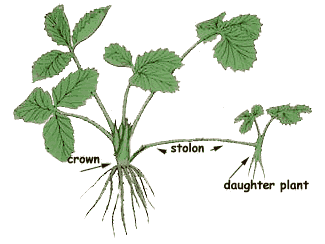
Rhizoids
_____________:
Root-like structures that anchor the mold to the substrate and absorb nutrients.
Example: Found in Rhizopus.
Specialized Hyphal Structures
Molds have evolved specialized hyphal structures to support their growth and reproduction:
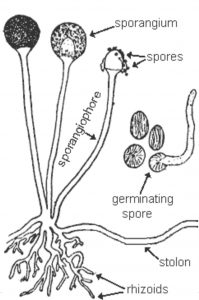
Conidiophores
Conidiophores / Sporangiophores:
_____________:
Specialized aerial hyphae that produce conidia (asexual spores) at their tips.
Example: Aspergillus, Penicillium.
Sporangiophores:
Specialized aerial hyphae that produce sporangia, which contain sporangiospores.
Example: Rhizopus.
Specialized Hyphal Structures
Molds have evolved specialized hyphal structures to support their growth and reproduction:
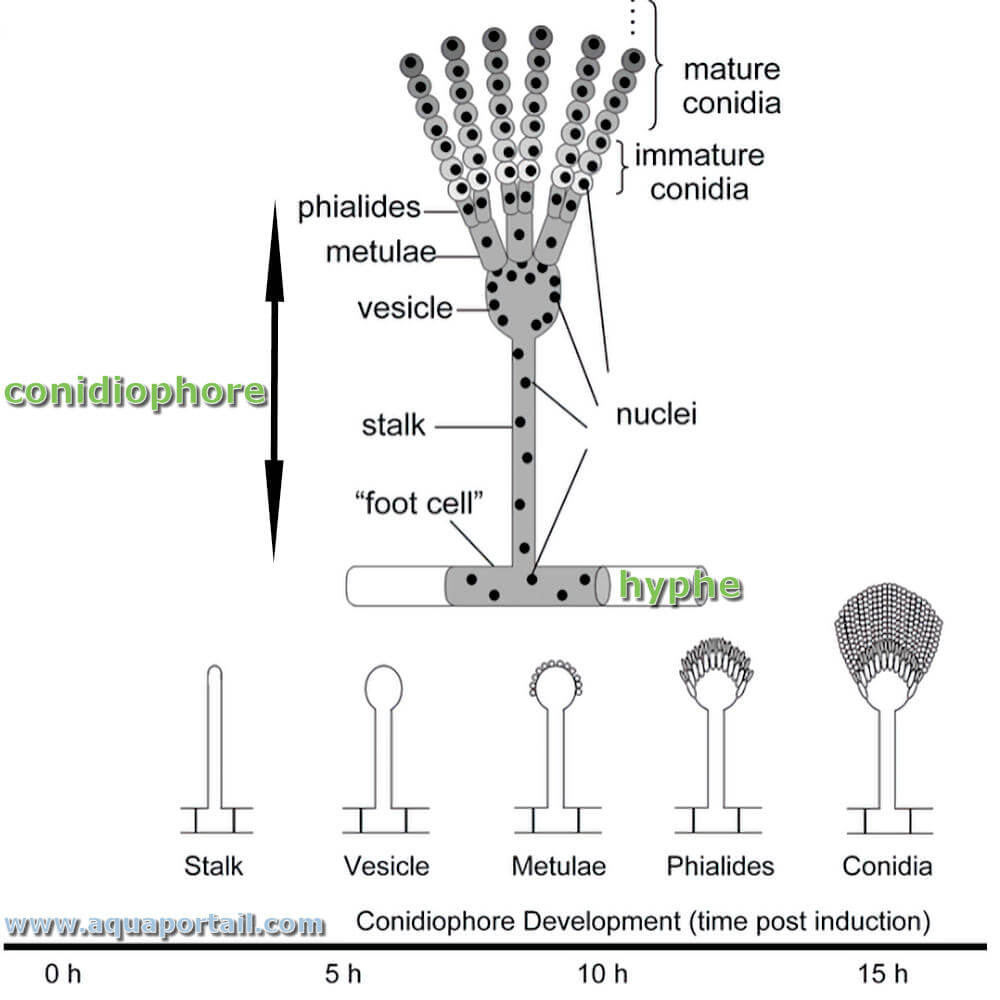
Sporangiophores
Conidiophores / Sporangiophores:
Conidiophores:
Specialized aerial hyphae that produce conidia (asexual spores) at their tips.
Example: Aspergillus, Penicillium.
____________:
Specialized aerial hyphae that produce sporangia, which contain sporangiospores.
Example: Rhizopus.
Specialized Hyphal Structures
Molds have evolved specialized hyphal structures to support their growth and reproduction:

Foot Cells
__________:
The basal cells of conidiophores that anchor them to the vegetative mycelium.
Example: Found in molds like Aspergillus.
Specialized Hyphal Structures
Molds have evolved specialized hyphal structures to support their growth and reproduction:
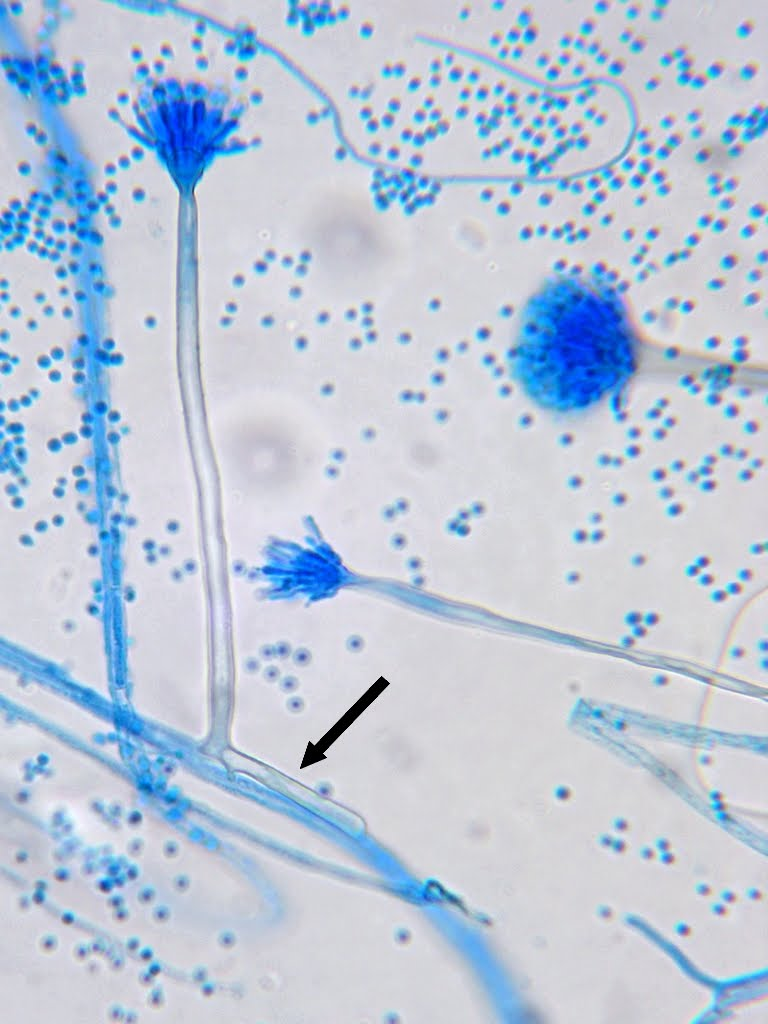
Asexual Reproduction
________________:
________________ is the most common mode of reproduction in molds. It involves the production of asexual spores, which are genetically identical to the parent mold.
Sporangiospores
Formed inside a sporangium, a sac-like structure borne on a specialized hypha called a sporangiophore.
Released when the sporangium ruptures.
Example: Found in Rhizopus
Types of Asexual Spores
Conidia
___________:
Formed on specialized structures called conidiophores.
Not enclosed in a sac; they are exposed and released directly.
Example: Found in Aspergillus and Penicillium.
Types of Asexual Spores
Arthrospores (Oidia):
_______________:
Formed by the fragmentation of hyphae into individual cells, each of which becomes a spore.
Example: Found in some Geotrichum species
Types of Asexual Spores
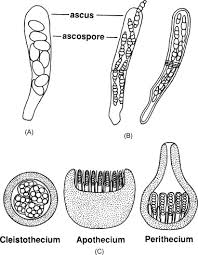
Chlamydospores
_____________:
Thick-walled, resistant spores formed directly from hyphal cells.
Serve as survival structures in harsh conditions.
Example: Found in Candida species.
Types of Asexual Spores
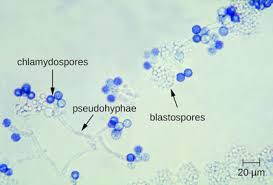
Sexual Reproduction
Sexual reproduction occurs when two compatible hyphae fuse to produce genetically diverse sexual spores. This process typically occurs under stressful conditions to increase genetic diversity and adaptability.
Types of Sexual Spores
Ascospores:
Formed inside a sac-like structure called an ascus.
Found in molds belonging to the Ascomycota group.
Example: Neurospora and Aspergillus nidulans.
Zygospores:
Formed by the fusion of two compatible hyphae, resulting in a thick-walled, resistant spore.
Found in molds belonging to the Zygomycota group.
Example: Rhizopus.
Ascospores
Sexual Reproduction
Sexual reproduction occurs when two compatible hyphae fuse to produce genetically diverse sexual spores. This process typically occurs under stressful conditions to increase genetic diversity and adaptability.
Types of Sexual Spores
__________:
Formed inside a sac-like structure called an ascus.
Found in molds belonging to the Ascomycota group.
Example: Neurospora and Aspergillus nidulans.
Zygospores:
Formed by the fusion of two compatible hyphae, resulting in a thick-walled, resistant spore.
Found in molds belonging to the Zygomycota group.
Example: Rhizopus.

Zygospores
Sexual Reproduction
Sexual reproduction occurs when two compatible hyphae fuse to produce genetically diverse sexual spores. This process typically occurs under stressful conditions to increase genetic diversity and adaptability.
Types of Sexual Spores
Ascospores:
Formed inside a sac-like structure called an ascus.
Found in molds belonging to the Ascomycota group.
Example: Neurospora and Aspergillus nidulans.
_____________:
Formed by the fusion of two compatible hyphae, resulting in a thick-walled, resistant spore.
Found in molds belonging to the Zygomycota group.
Example: Rhizopus.

Perfect Molds (Teleomorphs)
Perfect and Imperfect Molds
Molds are classified based on whether they exhibit both sexual and asexual reproduction or only asexual reproduction.
_______________________:
Exhibit a sexual state and can reproduce by both sexual and asexual means.
Example: Neurospora (Ascomycota).
Imperfect Molds (Anamorphs):
Perfect and Imperfect Molds
Molds are classified based on whether they exhibit both sexual and asexual reproduction or only asexual reproduction.
________________
Lack a sexual state and reproduce only by asexual means.
Many anamorphic molds are classified in the Deuteromycota group, which is no longer a formal taxonomic category but is used to describe their life cycle.
Example: Aspergillus and Penicillium.
Rhizopus
_______________:
Common Name: Bread mold
Key Feature: Often seen as black mold on bread and other carbohydrate-rich foods.
Significance: A common spoilage organism.
Mucor | Mucor mucedo
Key Feature: Known for forming "whiskers" on refrigerated meats (____________).
Significance: Spoils meat in cold storage and is associated with refrigeration issues.
Penicillium
______________
Key Features:
Causes rot in fruits.
P. roqueforti: Used in the production of blue cheese for flavor development.
Some species produce mycotoxins harmful to humans and animals.
Talaromyces:
Produces heat-resistant spores, leading to spoilage of fruit concentrates.
Talaromyces
Penicillium
Key Features:
Causes rot in fruits.
P. roqueforti: Used in the production of blue cheese for flavor development.
Some species produce mycotoxins harmful to humans and animals.
____________:
Produces heat-resistant spores, leading to spoilage of fruit concentrates.
Trichoderma
_____________
Key Feature: Causes fruit spoilage.
Significance: Commonly found in decaying fruits.
Alternaria
________________
Key Features:
Causes brown to black rots in fruits, wheat, and meats.
Often associated with spoilage in crops and stored grains.
Fusarium | fumonisins
__________:
Key Feature: Spoils fruits and grains.
Significance: Some species produce mycotoxins (e.g., ____________), harmful to humans and animals.
Geotrichum
__________________
Common Names: Dairy mold or machinery mold.
Key Feature: Often found in dairy processing equipment.
Significance: A spoilage organism for dairy products.
Byssochlamys
_______________
Key Features:
Produces heat-resistant ascospores.
Spoils high-acid canned foods, such as fruit juices and canned fruits.
Thamnidium | T. elegans
_____________
Key Features:
Produces "whiskers" on refrigerated meats.
______________: Produces proteases used as a meat tenderizer.
Wallemia
_______________
Key Feature: Can grow at very low water activity (Aw) (e.g., 0.69).
Significance: Associated with dried and salted foods, like fish.
Xeromyces
_____________
Key Features:
X. bisporus: Xerophilic (thrives in low-moisture environments).
Optimum Aw: 0.88.
Spoils prunes, chocolate, and syrups.
Aspergillus | A. niger
__________________
Key Features:
Causes yellow, green, or black rot on fruits and meats.
__________: Produces enzymes like B-galactosidase, invertase, lipase, and pectinase, used in industrial processes.
Some species produce mycotoxins (e.g., aflatoxins).
Special Subspecies:
Emericella.
Erotium: Xerophilic (low-moisture mold).
Neosartorya: Produces heat-resistant ascospores.
Emericella | Neosartorya
Aspergillus
Key Features:
Causes yellow, green, or black rot on fruits and meats.
A. niger: Produces enzymes like B-galactosidase, invertase, lipase, and pectinase, used in industrial processes.
Some species produce mycotoxins (e.g., aflatoxins).
Special Subspecies:
_____________
Erotium: Xerophilic (low-moisture mold).
_________: Produces heat-resistant ascospores.
Aflatoxin
Toxic Effects:
Hepatotoxic: Causes damage to the liver.
Highly carcinogenic: Known to cause cancer.
LD50: Represents the lethal dose for 50% of a population:
~9 ppm (mice)
0.5 ppm (dogs)
Chemical Composition:
Contains four key components: B1, B2, G1, G2.
Growth Conditions:
Optimal temperature: 24-28℃.
Water activity (Aw): 0.93-0.98 (high moisture).
Producing Molds:
Aspergillus flavus and Aspergillus parasiticus.
Contaminated Foods:
Common in corn, other cereals, peanuts, milk, and beer.
Significance: __________ are some of the most dangerous mycotoxins, requiring stringent monitoring in food systems.
Ochratoxin
____________
Producing Molds:
Aspergillus ochraceus.
Penicillium viridicatum.
Contaminated Foods: Often found in cereals, coffee, wine, and dried fruits.
Toxic Effects:
Causes kidney damage (nephrotoxicity).
Linked to carcinogenic and immunosuppressive effects.
Patulin
_____________
Producing Molds:
Penicillium spp..
Byssochlamys spp..
Contaminated Foods:
Commonly found in apples, apple products (e.g., juices), and other fruits.
Toxic Effects:
Can cause gastrointestinal issues and immune system suppression.
Fumonisin
_________________
Producing Molds:
Fusarium spp..
Contaminated Foods:
Found in corn and corn-based products.
Toxic Effects:
Causes esophageal cancer and neural tube defects in humans.
Linked to leukoencephalomalacia (brain disease) in horses and pulmonary edema in pigs.
Alternaria Toxin
______________
Producing Mold:
Alternaria spp..
Contaminated Foods:
Affects fruits, grains, and vegetables.
Toxic Effects:
Can cause cellular damage and is suspected to be carcinogenic.
Citrinin
___________
Producing Mold:
Penicillium citrinum.
Contaminated Foods:
Found in cereals, rice, and certain fermented foods.
Toxic Effects:
Primarily nephrotoxic (damages the kidneys).
May also suppress the immune system and cause oxidative stress.
Collection | Analysis
Mold Collection and Analysis
_____________
Significance: The method of collecting mold samples affects the likelihood of detecting mold in the environment or food.
Types of Samples:
Airborne samples: Capture mold spores suspended in the air.
Dust samples: Gathered from surfaces where mold spores may settle.
Surface samples: Taken directly from contaminated surfaces or food items.
______________
Mold testing methods fall into two broad categories:
Visual/Microscopic Analysis:
Examines the physical structure of the mold.
Identifies molds based on morphological characteristics.
DNA-Based Analysis:
Uses molecular techniques, such as PCR (Polymerase Chain Reaction), to identify specific mold species by their genetic material.
Provides higher accuracy and specificity.
Yeasts
________________:
Characteristics
Mostly unicellular: Unlike molds, which are multicellular and filamentous, yeasts are single-celled fungi.
Growth Conditions:
Can thrive in 60% sucrose (high sugar environments).
Can grow in 18% alcohol, making them suitable for fermentation.
Importance in Foods
Spoilage Agents: Yeasts can spoil sugary and alcoholic products (e.g., juices, jams, wines).
Food and Beverage Production:
Key organisms in producing alcoholic beverages like beer and wine.
Used in bread-making for leavening through CO₂ production.
Nutrient Sources:
Provide amino acids and proteins for supplementation.
Industrial Applications:
Serve as sources of enzymes, vitamins, and fats for various processes.
Propionates | Increased sugar content
Enumeration and Isolation
Surface Plating:
Used for yeast enumeration by culturing samples on agar plates.
Additives:
__________: Prevent bacterial contamination during yeast isolation.
______________: Creates an environment favorable for yeast growth.
Classification and Identification of Yeast
_____________
Yeasts are classified and identified through several techniques:
Cultural Characteristics:
Appearance and growth patterns on specific media.
Morphology and Reproduction:
Identifying cellular shapes and reproduction methods (e.g., budding, fission).
Physiology:
Evaluating metabolic capabilities, such as sugar fermentation or alcohol tolerance.
Molecular Techniques:
DNA-based methods for accurate identification of yeast species.
Cultural Characteristics
_________________:
These are observable traits of yeast colonies on culture media:
Pigment Formation:
Some yeast species produce pigments, which can help in identification.
Examples: Red pigments in Rhodotorula.
Colony Appearance:
Colonies can vary in texture, size, and color.
They may appear smooth, wrinkled, or creamy.
Film or Pellicle Formation:
Some yeasts form a film or pellicle on liquid media, often associated with oxidative metabolism.
Morphology
________________
The physical form and reproductive methods of yeast cells:
Shape:
Yeast cells may vary in shape, which aids in classification:
Spheroidal to oval: Typical of Saccharomyces.
Elongated/cylindrical: Seen in some species like Candida.
Apiculate: Pear-shaped cells, characteristic of some wild yeasts.
Mycelia Formation:
True Mycelia: Thread-like structures found in filamentous fungi.
Pseudomycelia: Chains of elongated yeast cells that resemble mycelia but lack true septation.
Reproduction:
Asexual:
Budding: A new cell forms as an outgrowth of the parent cell.
Fission: The parent cell divides into two daughter cells.
Sexual:
Formation of ascospores (sexual spores), common in Saccharomyces.
Physiological Characteristics | hydrolytic enzymes
_____________________:
How yeasts metabolize substrates and interact with their environment:
Metabolic Capability:
Yeasts can grow under oxidative (aerobic) or fermentative (anaerobic) conditions.
Oxidative Metabolism:
Occurs when oxygen is available.
Products: Cells, CO₂, and H₂O.
Fermentative Metabolism:
Occurs in the absence of oxygen.
Product: Alcohol (e.g., ethanol during fermentation).
Use of Carbon or Nitrogen Sources:
Yeasts produce _____________ to break down substrates (e.g., sugars, proteins).
These substrates are transported across the yeast cell membrane for utilization.
Molecular Techniques
________________
Advanced techniques for accurate yeast identification:
DNA Sequencing and Alignment:
Analyzing yeast DNA sequences to identify species.
Comparison of sequences to known genetic databases.
Coenzyme Q Profiles:
Coenzyme Q (ubiquinone) is an important molecule in cellular respiration.
The structure and composition of coenzyme Q vary among yeast species, serving as a unique identifier.
Coenzyme Q (ubiquinone)
______________ Profiles:
_______________ is an important molecule in cellular respiration.
The structure and composition of coenzyme Q vary among yeast species, serving as a unique identifier.
Saccharomyces
Key Role:
Used extensively in food and beverage production, such as bread-making, beer brewing, and wine fermentation.
Significance:
Produces alcohol and carbon dioxide during fermentation.
______________ is the most well-known species.
Zygosaccharomyces
___________________
Unique Features:
Known for their ability to thrive in extreme conditions.
Species:
Z. rouxii:
Xerophilic: Can grow in environments with very low water activity (Aw 0.62).
Z. bailii:
Acidophilic: Tolerates highly acidic conditions (pH 1.8).
Spoilage: Commonly spoils highly acidic foods like salad dressings.
Schizosaccharomyces
__________________
Key Traits:
Osmophilic: Tolerates high sugar concentrations.
Species:
S. pombe: Used in some brewing processes for its unique fermentation characteristics.
Candida
___________
Roles in Food:
Spoilage: Contributes to spoilage of beef and poultry.
Fermentation: Plays a role in fermenting cacao seeds, aiding in chocolate production.
Kluyveromyces
_____________:
Prevalence:
Found predominantly in dairy products.
Special Features:
Uses lactose as its primary carbohydrate source.
Produces lactase, an enzyme that breaks down lactose.
Debaryomyces
_____________
Prevalence:
Found in dairy products, like Kluyveromyces.
Species:
D. hansenii:
Halophilic: Thrives in environments with high salt concentrations (e.g., 24% NaCl, Aw 0.65).
Spoilage: Responsible for spoilage of juice concentrates and yogurt.
Pichia
_____________
Key Traits:
Known for spoiling pickled products.
Produces hat-shaped ascospores, a distinguishing feature.
Hanseniaspora
________________
Teleomorph: Related to the asexual genus Kloeckera.
Traits:
Produces apiculate (pear-shaped) cells.
Applications: Used in winemaking, especially for white wines like Chardonnay and Muscat.
Rhodotorula
______________
Appearance:
Produces pink, red, or orange-colored colonies, making it visually distinctive.
Ecology:
Psychrotrophic: Can grow in refrigerated environments.
Spoilage:
Found on refrigerated foods, including meats, seafood, and butter.
PROTOZOA IN FOODS
___________________
Protozoa are single-celled eukaryotic parasites associated with foodborne illnesses. Though they do not proliferate in food, they are transmitted via fecal contamination. Common detection methods include direct microscopy.
Giardia lamblia | cysts
______________
Characteristics:
Flagellated protozoan.
Produces ________, a resting structure allowing survival outside the host.
Transmission:
________ in contaminated water or food excyst in the host's intestine.
Disease: Giardiasis
Infective Dose: 10 ________ or fewer.
Incubation Period: 1–4 weeks.
Symptoms: Diarrhea, abdominal cramps, nausea, fever, vomiting, weight loss.
Sources: Contaminated water, ice cream, raw vegetables.
Entamoeba histolytica | Amoebiasis (amoebic dysentery)
______________
Characteristics:
Aerotolerant anaerobe that moves using pseudopodia.
Produces cysts in water; excysts in the intestine.
Produces enterotoxins.
Disease: _____________
Chronic Condition: Compared to bacterial dysentery.
Incubation Period: 2–4 weeks.
Symptoms: Severe diarrhea, abdominal pain, fever, vomiting.
Toxoplasma gondii | Toxoplasmosis
________________
Characteristics:
A coccidian protozoan and obligate intracellular parasite.
Cats are the definitive hosts.
Transmission:
Cysts in undercooked meats or contaminated surfaces.
Cysts can cross intestinal walls and the placenta.
Disease: ___________
Symptoms:
Often asymptomatic or latent.
Can cause fever, rash, headache, muscle aches, and swollen lymph nodes.
Severe Risk: To fetuses (transplacental transmission).
Infective Dose: ~100 cysts.
Sources: Contaminated meats.
Cryptosporidium parvum | Cryptosporidiosis
____________________:
Characteristics:
Coccidian protozoan and obligate intracellular parasite.
Produces cysts that excyst in the intestine.
Disease: ____________
Infective Dose: 10 cysts.
Incubation Period: Up to 2 weeks.
Symptoms:
Watery diarrhea, sometimes profuse (up to 17 liters/day in immunocompromised individuals).
Sources: Contaminated water.
Dinoflagellates
____________________
______________ are photosynthetic microorganisms found in marine environments. They produce neurotoxins and are often associated with seafood poisoning.
Gonyaulax catenella
Significance:
Causes colorful red tides.
Produces saxitoxin, a neurotoxin that accumulates in mollusks (filter feeders).
Saxitoxin is heat- and acid-stable.
Disease: Paralytic Shellfish Poisoning (PSP)
Symptoms:
Onset ~2 hours after ingestion.
Paresthesia: Tingling sensation around the mouth, lips, tongue, spreading to the face, scalp, neck, and extremities.
Shortness of breath.
Mortality Rate: ~10%, as there is no known antidote.
Gonyaulax catenella | saxitoxin
_________________
Significance:
Causes colorful red tides.
Produces __________, a neurotoxin that accumulates in mollusks (filter feeders).
__________is heat- and acid-stable.
Disease: Paralytic Shellfish Poisoning (PSP)
Symptoms:
Onset ~2 hours after ingestion.
Paresthesia: Tingling sensation around the mouth, lips, tongue, spreading to the face, scalp, neck, and extremities.
Shortness of breath.
Mortality Rate: ~10%, as there is no known antidote.
Paralytic Shellfish Poisoning (PSP)
Gonyaulax catenella
Significance:
Causes colorful red tides.
Produces saxitoxin, a neurotoxin that accumulates in mollusks (filter feeders).
Saxitoxin is heat- and acid-stable.
Disease: ____________________
Symptoms:
Onset ~2 hours after ingestion.
Paresthesia: Tingling sensation around the mouth, lips, tongue, spreading to the face, scalp, neck, and extremities.
Shortness of breath.
Mortality Rate: ~10%, as there is no known antidote.